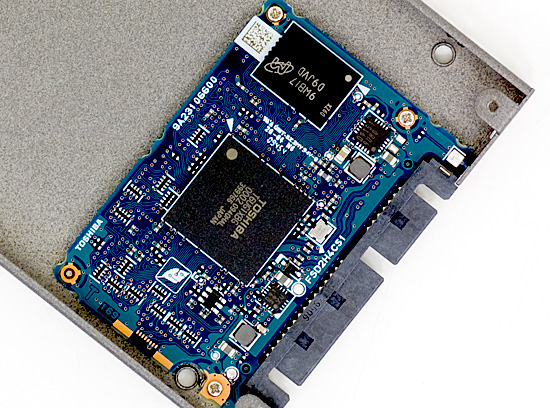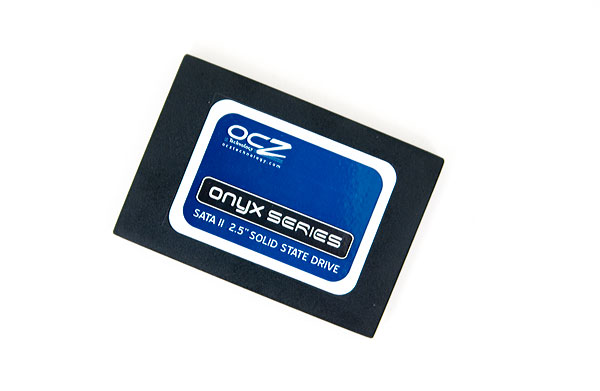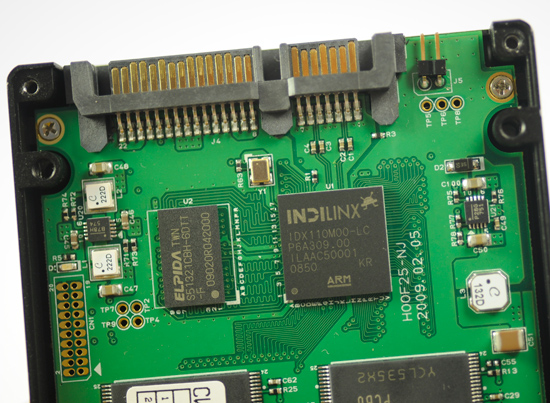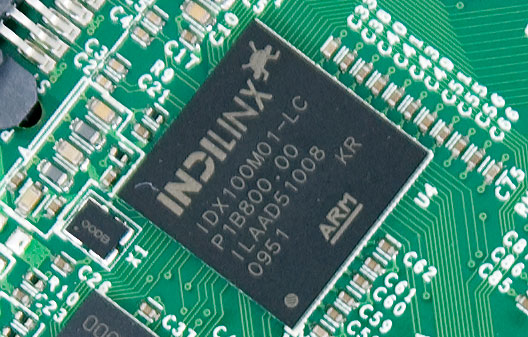2010 Value SSD (~$100) Roundup: Kingston and OCZ take on Intel
by Anand Lal Shimpi on June 3, 2010 12:01 AM ESTTwo years ago the best SSD you could buy was made by Intel and it cost $7.44 per GB of MLC NAND. Today Intel is actually the value leader. The 80GB X25-M G2 will set you back $205 at Newegg, or $2.56 per GB. The performance crown now belongs to companies like Micron and SandForce. Although Intel hopes to have performance leadership once more with its 25nm SSDs due out in Q4, the priorities have shifted. Intel’s focus is on bringing SSDs to the mainstream; it wants a bigger slice of the HDD pie. At the end of the day, that’s where the money is.
At just over $200 that’s affordable enough for high end notebooks and desktops but what about more mainstream price points? For many the $99 mark is key. Luckily as SSDs have gotten faster, a new breed of small, affordable SSDs have emerged right around the $100 mark. Today we’re going to take a look at three of those devices.
Intel’s X25-V 40GB
We’ll start off with Intel’s X25-V, currently only offered in a 40GB flavor. We’ve reviewed this drive before and it currently sells for $125 at Newegg. A bit more expensive than our other competitors, the X25-V uses Intel’s standard X25-M G2 controller but only has 5 of its 10 channels populated. The end result is a drive that performs similarly to the X25-M G2 in small file accesses but is about half the speed in large transfers.
The other disadvantage to the X25-V is its capacity. Intel uses all available capacity as spare area until it’s used up, which on a 40GB drive isn’t that much. Once you’ve got Windows 7 and a few applications on the drive you are lucky to have 15GB free. The less free space on the drive, the lower the controller’s performance will be and there are some areas where the X25-V will be less than half the speed of the X25-M G2.

The drive supports TRIM and comes with a 3-year warranty.
Kingston SSDNow V Series Boot Drive 30GB
Kingston used to sell a rebranded X25-V however in an interest to drive prices down even further Kingston switched to a cheaper Toshiba controller - the T6UG1XBG. The drive supports TRIM but not NCQ, which won’t be an issue for very light usage models but could be a problem for heavier workloads.

The most attractive part of the SSDNow V Series Boot Drive is its price. The drive alone will set you back $90 at Newegg, although you can get it in an upgrade kit for $115 (3.5" bay adapter). Like the X25-V, the 30GB drive comes with a 3-year warranty.
OCZ’s Onyx
The final drive in today’s roundup is the only one we haven’t previously reviewed here: OCZ’s Onyx. The Onyx uses an Indilinx Amigos controller, which is basically half of a Barefoot controller. You get four NAND channels instead of eight and maximum read/write speeds of 100/80MBps instead of 200/160 for Barefoot based drives.

The drive carries an $85 retail price for the 32GB version and comes with a 3-year warranty. OCZ also offers a 64GB version for $185.

Indilinx Barefoot

Indilinx Amigos
I owe OCZ an apology with regards to the Onyx. Here’s what happened. The first Onyx I got my hands on had a firmware bug that resulted in data corruption. A simple Windows install on my testbed revealed it. The install wouldn’t complete successfully. OCZ hadn’t seen the issue internally at first but eventually saw the same thing I did and immediately halted shipments. OCZ even contacted those customers who had received Onyx drives and replaced them.

The second Onyx I received supposedly fixed the data corruption bug I ran into before. It completed my Windows install but I got a CRC error during a SYSMark install. I incorrectly assumed that this was a problem with the Onyx drive once again and not an issue with my setup. I immediately contacted OCZ and told them that I was still having problems with the drive. After duplicating the same problem on another value drive it became clear that it was an issue with my SYSMark install and not the drive. I jumped to conclusions based on my previous experience with the Onyx drive without thoroughly testing the conclusion first. In fact, I did the very thing that we often accuse SSD makers of doing: not testing. In this case I wasn’t shipping a product but in my book, coming to a conclusion is the same thing. So to OCZ: I am sorry.
Now let’s get to the roundup.
| Value SSD Spec Sheet Comparison | |||||
| Intel X25-V | Kingston SSDNow V Series Boot Drive | OCZ Onyx | |||
| Controller | Intel 34nm | Toshiba T6UG1XBG | Indilinx Amigos | ||
| NAND | 40GB IMFT 34nm MLC | 32GB IMFT 34nm MLC | 32GB IMFT 34nm MLC | ||
| Channels | 5 | 4 | 4 | ||
| Sequential Read Speed | Up to 170MB/s | Up to 180MB/s | Up to 100MB/s | ||
| Sequential Write Speed | Up to 35MB/s | Up to 50MB/s | Up to 80MB/s | ||
| Random Read Speed | Up to 25K IOPS | Not Listed | Not Listed | ||
| Random Write Speed | Up to 2.5K IOPS | Not Listed | Not Listed | ||
| Warranty | 3-years | 3-years | 3-years | ||
| Price | $125 | $90 | $85 | ||
The Test
| CPU | Intel Core i7 965 running at 3.2GHz (Turbo & EIST Disabled) |
| Motherboard: | Intel DX58SO (Intel X58) |
| Chipset: | Intel X58 + Marvell SATA 6Gbps PCIe |
| Chipset Drivers: | Intel 9.1.1.1015 + Intel IMSM 8.9 |
| Memory: | Qimonda DDR3-1333 4 x 1GB (7-7-7-20) |
| Video Card: | eVGA GeForce GTX 285 |
| Video Drivers: | NVIDIA ForceWare 190.38 64-bit |
| Desktop Resolution: | 1920 x 1200 |
| OS: | Windows 7 x64 |










49 Comments
View All Comments
fyleow - Thursday, June 3, 2010 - link
Anand,Thanks for using overall performance rather than random read/write to base your conclusions. Your earlier SSD articles slammed the Samsung controller chips pretty hard for the random read/write performance even though their real world performance wasn't too bad.
coolhardware - Thursday, June 3, 2010 - link
Just wanted to say "thank you" for each and every one of the SSD articles posted to AnandTech. Your thorough articles make purchasing a SSDs a much safer proposition :-).sparkuss - Thursday, June 3, 2010 - link
Anand,I have been following the TRIM driver issue with my C300-256 SSD on the Crucial forums. Based on the Test Bed chart can I assume you used only the ICH10R port(s). And which OS driver was used? The MSAHCI or the INTEL IMSM?
Thank You
RU482 - Thursday, June 3, 2010 - link
I understand the significance of the TRIM test that was performed....BUT...how realistic is this test. I'd be interested in seeing how well the TRIM and Garbage Collection functionality of the firmware work if, say, half of the drive endured a similar loading. OR, run the same units idle for 100hrs (yeah, ridiculous, just like the test) and see how much things have recovered.In the grand scheme of things, benchmarks are great for marketing. They do offer some credence in the fact that they offer a side by side comparison of various components under certain lab conditions. But the problem is, they do not often reflect real world usage performance. Or, more importantly, real world tangible differences in performance.
Chloiber - Thursday, June 3, 2010 - link
I can assure you, that these benchmarks to simulate TRIM aren't that far away from reality. On a small drive, you will see such crappy performance after several weeks, depending on your usage. I experienced this on the Indilinxdrives when they didn't have TRIM and better GC. 3 Weeks and my write was down to 35MB/s.Of course it depends, as I said, highly on your usage pattern. If you don't use it (idle, what a test?!?!), it won't affect the performance. Why should it...
TheGame240 - Thursday, June 3, 2010 - link
I'm not proposing anything that extreme, but I would like to see Garbage Collection tested on a TRIM-less OS. Something similar to the TRIM test used now, but ran under Vista/XP or Windows 7 with TRIM commands disabled and the drives left idle over night. OCZ has touted their aggressive Garbage Collection, while Intel just says it's there. It would be nice to have an actual measurement of their effectiveness. Especially in a budget review where these drives would likely be used as upgrades for older Vista desktops or netbooks running XP.rocky12345 - Thursday, June 3, 2010 - link
It was a good review/article but non of those drives are worth what you pay for them. They simply are way to small to be of any good to anyone. Also as a gaming drive 30GB or 40GB really!! Maybe back in 1999 that would float every ones boat but in this day & age 40GB just does not cut it & for the price a 1 or 2TB HDD is well worth the 7 or 8 seconds it takes longer to load a game. I do see SSD being a good thing someday but at this point if you have to give up your left nut to get one that is a good size then it is not worth it at all. Thankstherealnickdanger - Thursday, June 3, 2010 - link
If you haven't used one on your primary computer, then you really don't know what you're talking about. Buy and use one for a week or two (it won't take that long) and then go back to your slow-as-molasses hard drive. You'll feel like you're back in 1989 while you wait and wait and wait for your hard drive to access data.rocky12345 - Friday, June 4, 2010 - link
slow hard drive yea ok. I happen to have 2 sets of raid arrays in my system 4 in each set. first set is Seagate 1TB 7200.12 4 in total second set is Seagate Barracuda® XT 2TB 4 in total. So trust me I am not missing anything as you stated I have more than enough speed & most importantly I have the space my work requires me to have a SSD at this point can not give me the needed space at the same price point. ys the SSD drives are fast they just need to make them bigger & cheaper until then they are a niche product..Nataku - Friday, June 4, 2010 - link
I hate to say this... but you really should try before going off like that... X25 felt way faster than the RAID0 I've encountered over the years